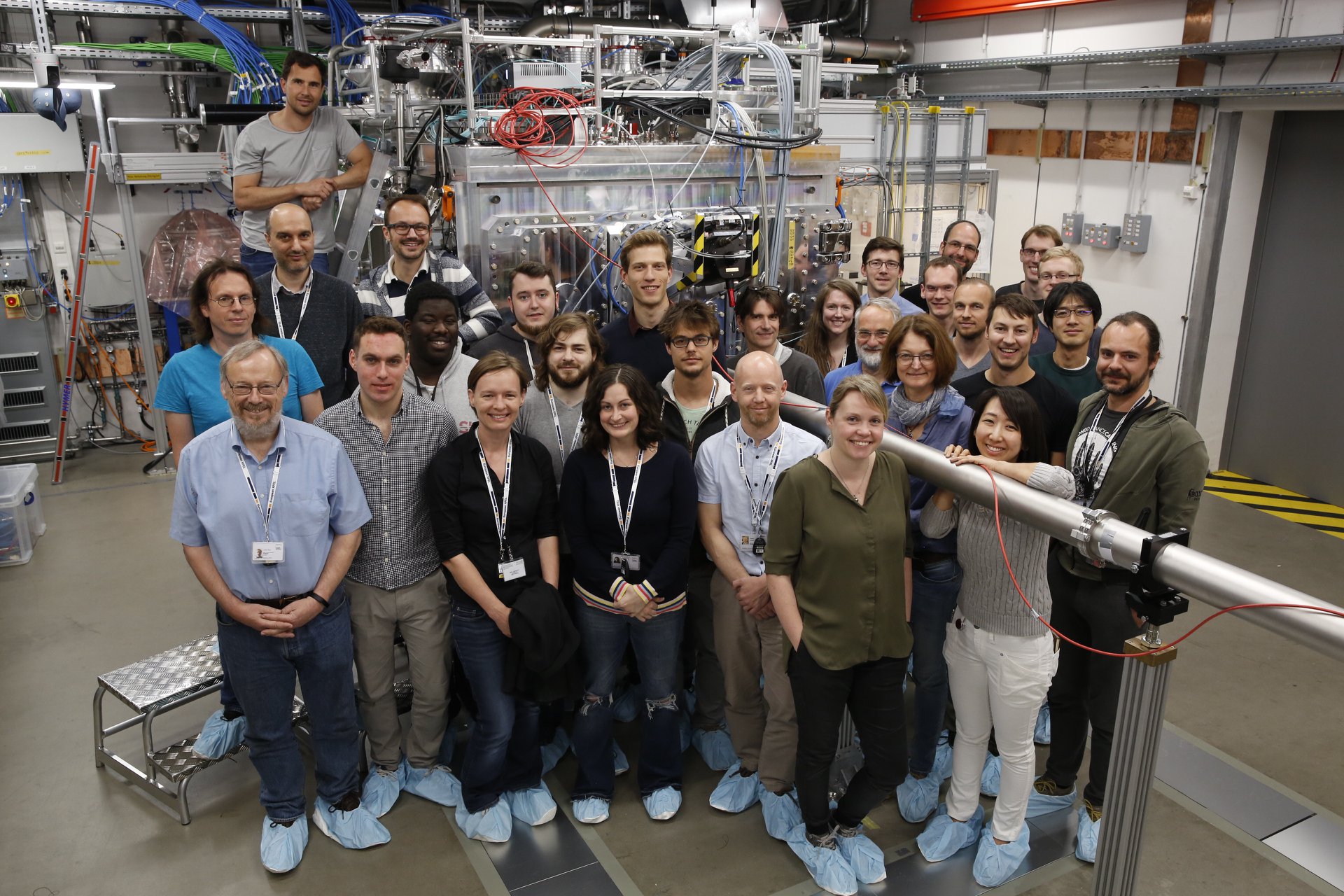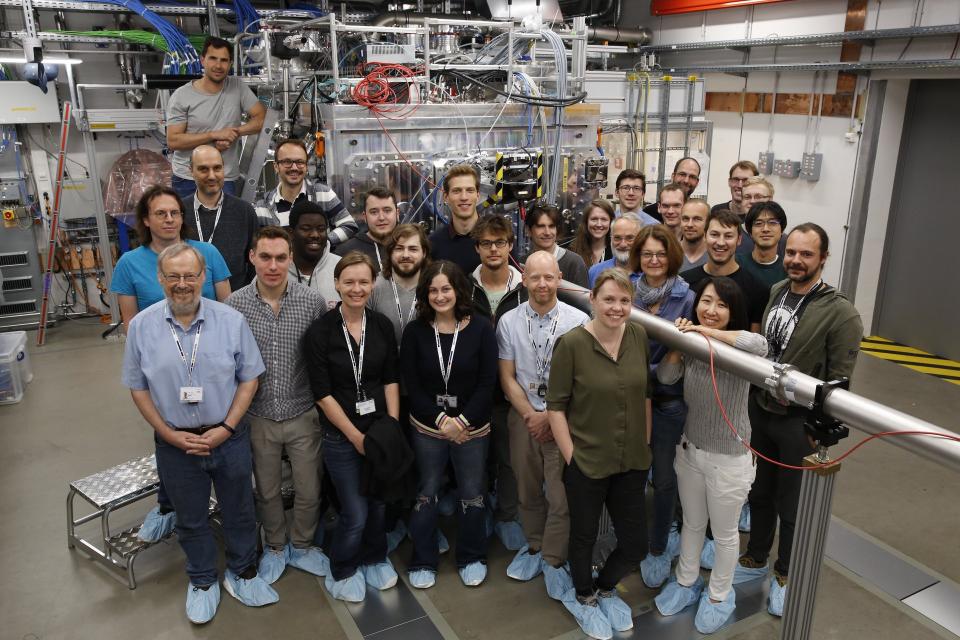
at the European XFEL.
The Oxford Centre for High Energy Density Science (OxCHEDS) has led the first ever experiment on the newly-commissioned High Energy Density Science end-station at the European XFEL. Professor Gianluca Gregori was joint PI, and he, Justin Wark, AWE academic visitor Andy Comley, and Oxford students and postdocs were part of the team that included collaborators from SLAC, LLNL, and XFEL.
This first experiment used the high brightness x-ray beam on its own (the high-power optical lasers are still to be commissioned, with the UK 100-J 10-Hz DiPOLE system being delivered later this year).
The first experiment used highly monochromatic x-rays to scatter from targets to measure the change in x-ray energies when phonons are created and destroyed - a technique that could ultimately lead to the direct measurement of temperature of matter under shock or ramp compression. The experiment took place over five 12-hour shifts from the 15th-19th May, and, apart from a few minor teething problems, was a huge success. OxCHEDS Director Professor Justin Wark said “It was a real privilege to be part of the first HED experiment at XFEL. This is something the HED community has been working towards for more than a decade, and the future capabilities to perform experiments combining high repetition rate high power optical lasers and the brightest x-ray source on the planet is going to be revolutionary for the field”.
Andy Comley said following the campaign ‘The new European XFEL is a world-leading facility and promises to return high-quality data at unprecedented repetition rates. It was a privilege to be involved in the first HED experiment with our academic and US colleagues and we look forward to the exciting discoveries anticipated in the near future.’

